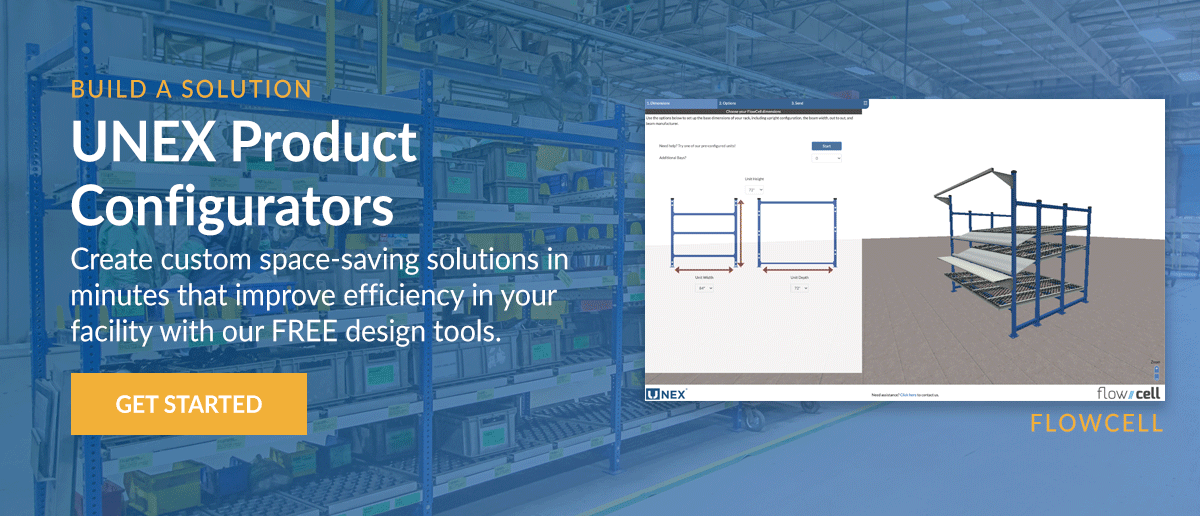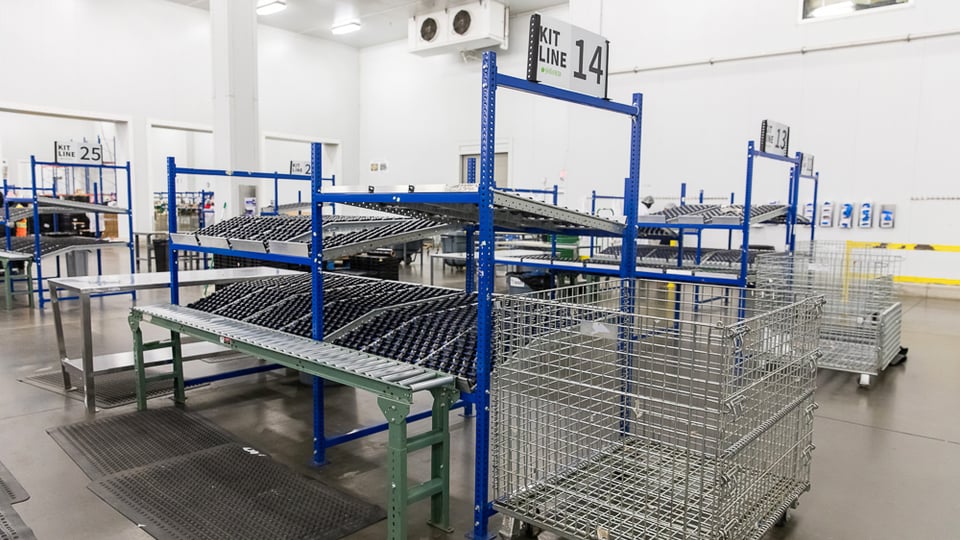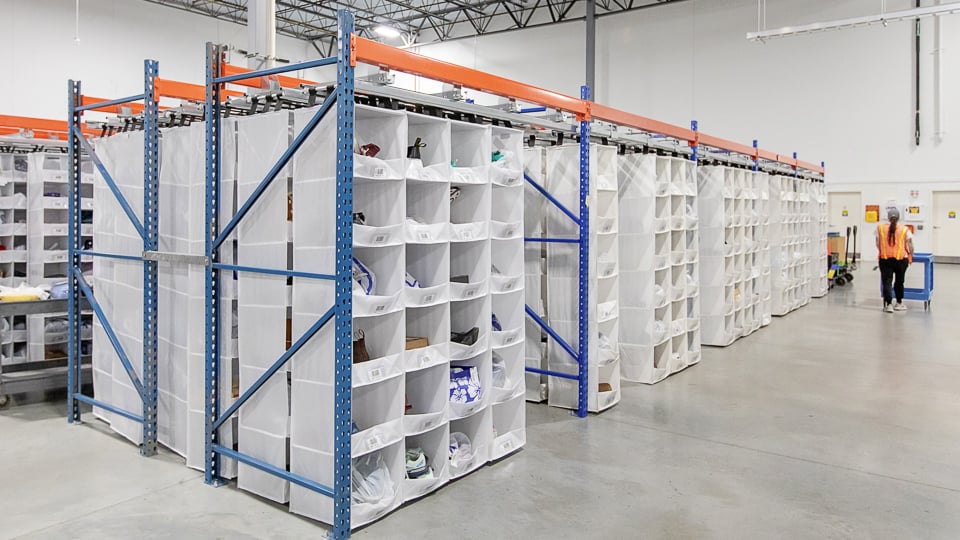Top 10 Warehouse Hazards and How to Prevent Them

Warehouses are fast-paced, high-volume environments where workers handle products of all shapes, sizes, and weights. While these operations are essential for keeping supply chains moving, they also present significant safety risks if hazards are not properly managed. With heavy machinery, towering storage racks, and frequent manual handling of goods, warehouses can become accident-prone areas if safety measures are overlooked. The sheer scale of inventory movement combined with poor organization, improper handling, and equipment misuse increases the likelihood of workplace injuries.
Warehouse workers face multiple risks that can lead to serious injuries and costly downtime. Addressing these common hazards through proper warehouse organization, improved storage solutions, and worker safety protocols is essential to maintaining a safe and productive work environment.
Identifying and Preventing Common Warehouse Hazards
Hazards exist in any workplace. Warehouse hazards, though, create more accidents because of the massive quantities of products of all different sizes, shapes and weights stored on shelves, floors and anyplace else someone can find a place to put a box, pallet or carton. Per the National Institute for Occupational Safety and Health, the biggest warehouse hazards include:
1. Overexertion Injuries
These occur when workers lift items that are big and heavy for a long period of time resulting in excessive physical effort. Injuries can occur to joints and ligaments. Also, in the warehouse, workers walk to pick orders. The trip length between picks can be quite long, especially if the warehouse is not organized properly. Properly planned pick paths, SKU rationalization and appropriate slotting of SKUs can help to cut down the length the worker must travel to fill orders.
2. Lifting and Handling Materials
Improper handling of boxes, pallets, cartons and items can cause strain and injury to different parts of the body, especially the back. Heavy, big objects should be placed in the “golden zone,” where workers do not have to bend, reach or lift above their shoulders or below their waists.
3. Slips, Trips and Falls
Each year, more than 8 million Americans will be treated in emergency rooms due to an accidental fall. If items are store haphazardly within the distribution center, such as sticking out too far from a shelf, or placed in the middle of an aisle, workers can easily injure themselves by tripping over or running into these items. Making sure floors are dry and slip resistant can prevent slips, trips and falls.
4. Falling Objects
Items not stored properly can fall and inure someone. If the storage racks do not have end-caps, items can just slide right out onto the floor causing injury. For example, UNEX Keg Flow features side rails to help steady heavy beer kegs, a custom hanger to provide fractional pitch and a high roller stop so that kegs don’t topple off the end.
Learn how to save space in your facility. Download The Guide To Optimizing Warehouse Space Utilization!
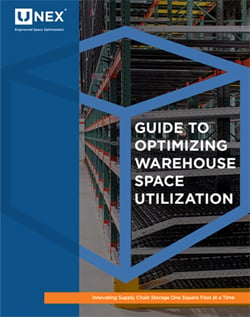
5. Forklifts
Most accidents occur in a warehouse at/with the docks, forklifts, conveyors, storage units and manual lifting/handling. Forklifts can overturn or they can be overloaded, subjecting materials to falling off. Accidents between forklifts of between a forklift and another surface can cause serious injury. Statistics show that 1 in 10 forklifts are involved in an accident each year. Operators need to check hydraulic levels, tire pressure, engines, controls, steering and brakes each day to make sure all are working properly.
6. Loud Noise
Tools, equipment and machinery that makes loud noises can cause hearing loss. Ear protection should be work by workers in this environment. The single biggest source of noise and threat to workers’ hearing is often the radio they carry. In order to be heard above the din around them, the radio must be at least three decibels louder. But dB Blockers are designed to integrate with all modes of communication, so workers can communicate and hear clearly at all times while staying protected.
7. Unstable Packaging
Packaging is being made more flimsy in an effort to reduce cost and waste. As a result, things like cardboard boxes are being replaced by cardboard slats covered in plastic, which are more unstable when loaded. Workers need to pay particular attention to avoid dropping contents or injuring themselves by lifting flimsy packaging.
8. Don’t Overload Carts
Carts help carry products or cartons during picking operations. Make sure that the cart can handle the load and that the items stacked on the cart are not above the picker’s level of vision so you won’t bump into any items, causing the cart to spill.
UNEX Solutions for a Safer and More Efficient Warehouse
Addressing warehouse hazards starts with improving organization, reducing worker strain, and optimizing material flow. UNEX provides smart storage and handling solutions that help warehouses minimize risks while increasing efficiency. Here’s how UNEX solutions tackle some of the most common workplace hazards.
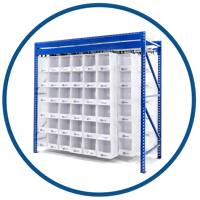 SpeedCell High-Density Storage
SpeedCell High-Density Storage
Overexertion and improper lifting techniques can lead to serious musculoskeletal injuries. SpeedCell high-density storage improves warehouse ergonomics by bringing products within easy reach, eliminating the need for excessive bending, reaching, and lifting. By condensing 200 feet of shelving into just 40 feet, SpeedCell also reduces worker travel distance, minimizing fatigue and boosting overall productivity.
 SpanTrack Carton Flow
SpanTrack Carton Flow
Poorly organized inventory can create dangerous trip hazards in warehouse aisles. SpanTrack carton flow provides secure, gravity-fed storage that keeps products in place, ensuring clear, obstruction-free walkways. With items positioned for first-in, first-out (FIFO) picking, workers can access inventory efficiently without navigating around misplaced boxes or cluttered storage areas.
 Gravity Conveyors
Gravity Conveyors
Forklifts and manual carrying of heavy loads increase the risk of accidents and injuries. UNEX gravity conveyors help move picked orders efficiently without the need for excessive lifting or forklift transport. By seamlessly transferring goods from pick zones to packing stations, these conveyors reduce worker strain, speed up fulfillment, and create a safer work environment.
Enhance Safety and Efficiency with UNEX Solutions
Ergonomics is important in the warehouse for safety as well as productivity. Products need to be handled correctly in picking and packing operations to reduce the risk of injury from improper handling. That's why UNEX emphasizes ergonomics in all of its solutions.
By integrating UNEX solutions, warehouses can increase safety, improve organization, and boost efficiency. If you're looking for smarter ways to protect workers and streamline operations, contact UNEX today to find the right storage and handling solutions for your facility.

